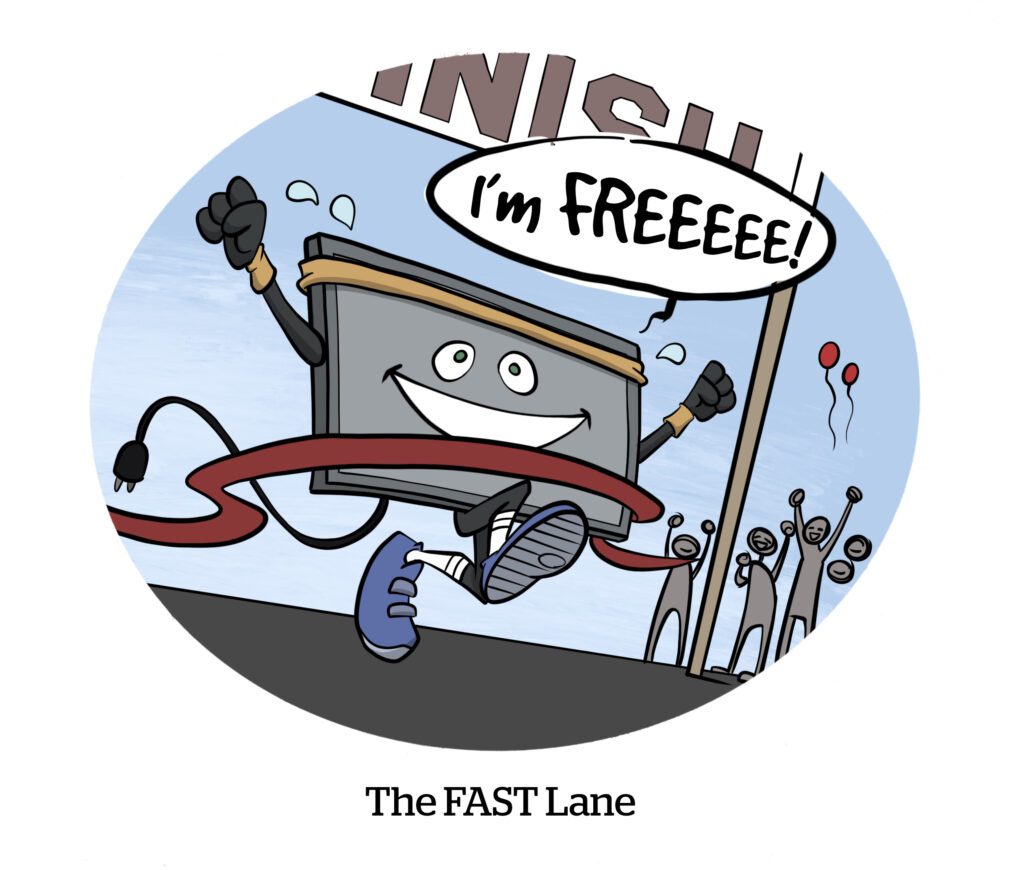I watch what could only be described as an inadvisable amount of YouTube content. (To wit, I felt more starstruck at the YouTube Brandcast than any other upfront presentation this year, in part, because I recognized several of my favorite creators in the audience.)
My YouTube creator obsession has me fascinated by an ongoing trend I’ve noticed in the CTV industry: A lot of companies that produce free ad-supported channels rely on content that already exists on YouTube.
Creator Television, the burgeoning FAST channel owned by ad platform Sabio Inc., features licensed material from the YouTube channels of Malaysian comedian Nigel “Uncle Roger” Ng and “Latinos Be Like” creator Jenny Lorenzo. A lot of kid-safe channels (including Kidoodle.TV, which I talked about last week) source shows from Blippi, Ryan’s World and Cocomelon, all of which first made it big on YouTube Kids.
Meanwhile, this week, Samsung TV Plus expanded on the creator content slate they announced during this year’s NewFronts. In addition to other well-known creators like Smosh, MrBeast, The Try Guys and Hot Ones, Samsung TV Plus will now feature content from Mark Rober, a former NASA engineer who explains complex scientific concepts, and Dhar Mann, who writes and produces feel-good scripted videos akin to a TV anthology series.
Out of those creators mentioned, only Dhar Mann appears to be working on original content for Samsung TV; namely, 13 new episodes that will premiere on his eponymous channel. Everything else, so far, seems to be made up of licensing deals.
And every time I hear about one of these new agreements, I think, “Good for them and all, but … why?”
The pros
To be fair, this type of arrangement makes complete sense for both parties from a business perspective.
Relying on a single revenue source can put creators in a precarious position, as they end up beholden to the algorithmic whims of the social media platforms they use to publish their content. To say nothing of what happens when the platform you’re using shuts down completely, like what almost happened with TikTok this year.
This instability is why so many creators supplement the money they get from ad revenue (if they even get any in the first place!) with sponsorships and membership-based subscriptions. Except those revenue streams can often be unpredictable, too, depending on how much your audience gives and how much new material you produce.
Licensing existing content gives those creators a chance at a slightly steadier source of income. And for FAST channel programmers, this content helps them quickly scale.
When I asked Samsung TV’s exec team about their content-sourcing strategy in advance of this year’s NewFronts, Senior Vice President and General Manager Salek Brodsky told me YouTube partnerships are especially helpful for targeting younger audiences who already have a familiarity with these brands (which would be me, theoretically).
“We’re very conscious about selecting folks that have mass appeal and are advertiser friendly, and we’ve received an enormous amount of interest,” Brodsky said.
The cons
Here’s where I always get tripped up by this proposition, though: Why would I, as a consumer, think to seek out a FAST channel in the first place when I’m already watching that content directly on YouTube (or, even better, on the creator’s app)?
When I ask FAST channel operators about whether or not they’re trying to compete with YouTube, they usually cite the same key differentiator: curation.
“I don’t think it’s as much about pulling YouTubers away as it is about taking the best of YouTube and curating it out for a TV experience,” Brodsky told me. “We spend a lot of time constructing and producing these channels, and that’s a dramatically different way of experiencing these creators than hunting and pecking around YouTube.”
Which also makes sense, I can admit. If you’re like me and leave YouTube’s autoplay feature running, eventually the algorithm will start showing you something you’re not actually all that interested in watching. In some cases, like with kids’ content, curation can even offer an additional level of much-needed safety and security.
Maybe the problem, then, is that I’m too reliant on YouTube.
YouTube might have a lot of drawbacks, but its TV app is remarkably intuitive and easy to use compared to most of the FAST programs I’ve tried, which can be hard to search through. And given how popular YouTube is among TV watchers – it has dominated the Nielsen media distributor gauge for five consecutive months – I suppose I’m not alone in thinking that.
Then again, it’s just as likely that I’m not the target audience for these types of creator channels – not because I don’t already know all their names, but because I’m already set in my ways.
Which is fine! That’s the great thing about TV – there’s something for everybody.















